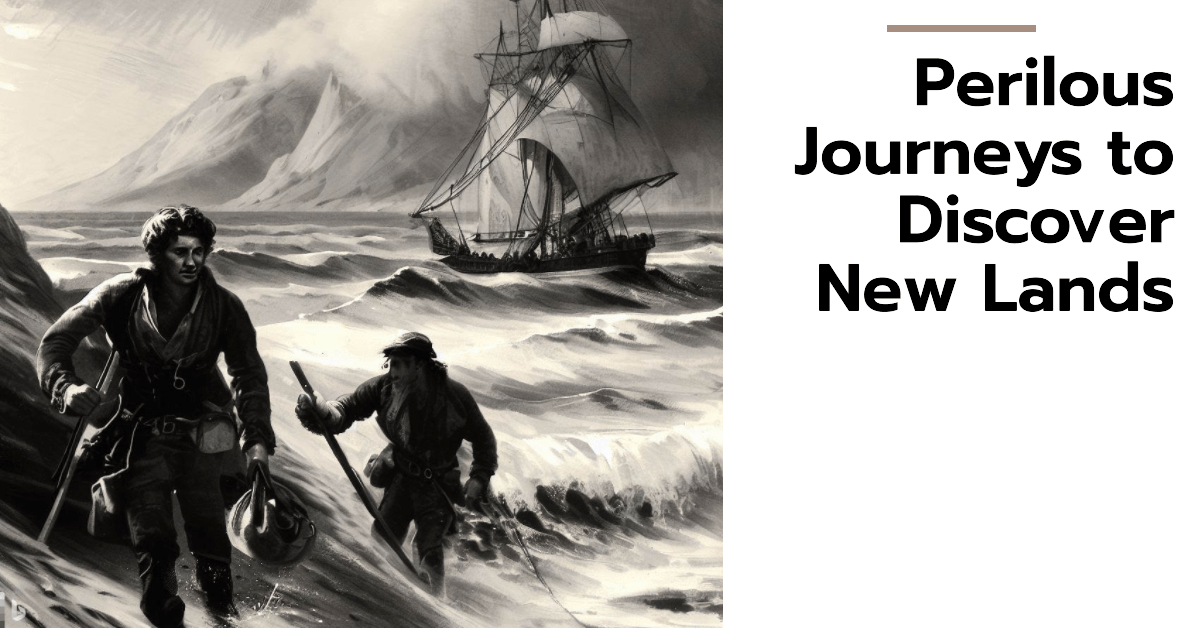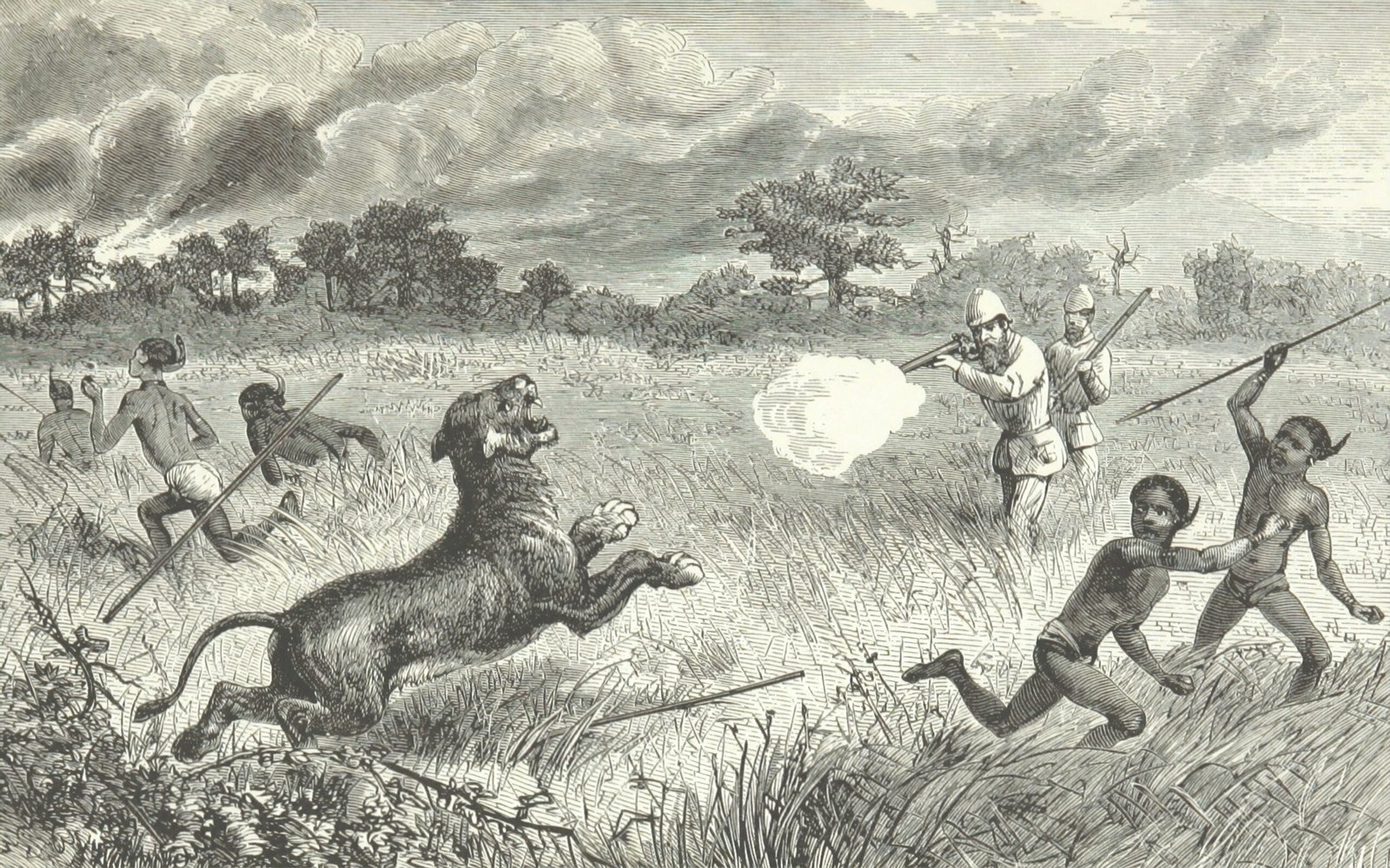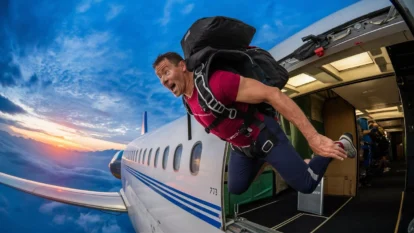In the annals of history, few chapters are as captivating as the era of early European exploration. Fuelled by a thirst for knowledge, wealth, and glory, intrepid sailors set sail into the unknown, driven by the desire to uncover new lands, trade routes, and civilizations. These daring expeditions, undertaken by courageous men like Christopher Columbus, Vasco da Gama, Ferdinand Magellan, James Cook, and Hernán Cortés, paved the way for the Age of Discovery and forever altered the course of human history.
This collection of stories delves into the extraordinary journeys undertaken by these European sailors, their triumphs, trials, and encounters with the unfamiliar. From the bold voyages of Christopher Columbus across the Atlantic to the circumnavigation of the globe by Ferdinand Magellan’s crew, these accounts take us on a captivating journey through time, allowing us to witness firsthand the audacity, perseverance, and sheer determination of these explorers.
As we delve into the depths of the narratives, we witness Christopher Columbus’s relentless pursuit of a western route to Asia, despite the skepticism and hardships endured by his crew. We witness Vasco da Gama’s relentless quest to find a sea route to India, braving the treacherous seas and charting unknown waters. We experience the awe-inspiring moment when Magellan’s fleet reached the far reaches of the Pacific, unveiling the vastness of our planet. And we bear witness to the encounters between Hernán Cortés and the Aztec Empire, forever altering the destiny of Mesoamerica.
These stories not only recount the daring exploits of these sailors but also shed light on the broader historical context of European expansion, the clash of civilizations, and the lasting consequences of these expeditions. They serve as a testament to the human spirit of curiosity, exploration, and the unyielding pursuit of knowledge.
So, join us as we embark on this voyage of discovery, where the untamed seas meet uncharted horizons. Brace yourself for tales that will ignite your imagination, inspire your sense of adventure, and transport you to an era of exploration, conquest, and wonder. Let us unravel the extraordinary stories of those who dared to venture into the unknown and forever changed the course of history.
The Voyage of Christopher Columbus
In the late 15th century, Christopher Columbus, an Italian explorer sailing under the Spanish flag, set out on a momentous journey that would reshape the world. His aim was to find a Western route to Asia, bypassing the perilous and time-consuming journey around Africa. Columbus believed that by sailing west across the Atlantic Ocean, he would reach the rich lands of India and China.
On August 3, 1492, Columbus set sail from the Spanish port of Palos de la Frontera with three ships: the Santa Maria, the Pinta, and the Niña. His crew consisted of approximately 90 men, including sailors, craftsmen, and navigators. Their journey was fraught with uncertainties and fears of falling off the edge of the flat Earth, as was the prevalent belief at the time.
After weeks at sea without sighting land, morale among the crew began to waver. They grew anxious, doubting Columbus’s leadership and questioning the purpose of their voyage. However, Columbus remained resolute, assuring them that land was within reach. Finally, on October 12, 1492, after 70 days at sea, a sailor named Rodrigo de Triana spotted land from the Pinta’s crow’s nest. The sight of land, an island in the present-day Bahamas, brought immense relief and jubilation to the crew.
Columbus named the island San Salvador (meaning “Holy Savior”) and continued to explore the surrounding areas, believing he had reached the outskirts of Asia. He encountered the native Taíno people, whom he mistakenly referred to as “Indians” due to his belief that he had reached the Indian Ocean. Columbus also explored other islands in the Caribbean, including Cuba and Hispaniola (now divided between Haiti and the Dominican Republic).
During subsequent voyages, Columbus continued to explore the Caribbean, hoping to find the riches of Asia. However, he faced various challenges, including storms, shipwrecks, and conflicts with indigenous peoples. Despite these obstacles, Columbus made a total of four voyages across the Atlantic between 1492 and 1504, each revealing new territories and cultures.
While Columbus’s voyages did not directly fulfill his original goal of finding a Western route to Asia, they had profound consequences. They opened up the Americas to European exploration, colonization, and trade, ultimately leading to the establishment of European empires in the New World. Columbus’s voyages initiated the Columbian Exchange, the exchange of goods, ideas, and diseases between the Old World and the New World, transforming societies on both sides of the Atlantic.
However, it is crucial to note that Columbus’s expeditions also had devastating consequences for the indigenous populations of the Americas, including enslavement, forced labor, and the spread of diseases that decimated entire communities. The complex legacy of Columbus and the European conquest of the Americas continues to be a subject of historical debate and reflection.
Nevertheless, the voyage of Christopher Columbus stands as a pivotal moment in history, marking the beginning of a new era of European exploration, colonization, and the eventual reshaping of the world as we know it.
Vasco da Gama and the Sea Route to India
In the late 15th century, the Portuguese explorer Vasco da Gama embarked on a historic voyage with the goal of finding a sea route to India. At the time, the lucrative trade in spices and other valuable commodities from the East was controlled by Muslim merchants, who dominated the overland Silk Road and Red Sea routes. The Portuguese sought to bypass these routes and establish direct trade links with India, thus securing a significant advantage in the spice trade.
In July 1497, da Gama set sail from Lisbon, Portugal, with a fleet of four ships. His flagship was the São Gabriel, accompanied by the São Rafael, the Berrio, and a storage ship. Da Gama’s crew comprised experienced sailors, navigators, and interpreters, as well as soldiers and craftsmen.
The voyage was arduous and fraught with numerous challenges. Da Gama sailed down the western coast of Africa, encountering treacherous currents, unpredictable winds, and hostile encounters with African tribes. He eventually reached the southernmost tip of Africa, which he named the Cape of Good Hope, on November 22, 1497. This achievement marked a crucial milestone, as da Gama had successfully rounded the Cape and entered the Indian Ocean.
Navigating the vast expanse of the Indian Ocean, da Gama faced further trials. He battled violent storms, endured food and water shortages, and encountered both friendly and hostile indigenous populations along the East African coast. Nevertheless, da Gama pressed on, guided by his navigators and the knowledge gained from previous Portuguese explorations.
After several months at sea, on May 20, 1498, da Gama’s fleet reached the southwest coast of India, near the city of Calicut (now Kozhikode). This marked the culmination of their voyage and the realization of their goal: finding a direct sea route to India. Da Gama’s arrival in Calicut sparked both curiosity and apprehension among the local rulers and merchants, who were accustomed to the Arab dominance in trade.
Da Gama negotiated with local rulers and established trade agreements, securing a cargo of spices and other valuable goods for the return journey. However, tensions soon arose between the Portuguese and the ruling Zamorin of Calicut, leading to a violent clash. Da Gama departed Calicut, laden with spices, and embarked on his return voyage to Portugal.
The return journey proved as challenging as the outward one. Da Gama faced storms, navigational difficulties, and encounters with hostile Arab and African fleets. After a grueling journey lasting more than two years, the remaining ships of da Gama’s fleet arrived back in Lisbon in September 1499. The successful completion of the voyage established Portugal as a formidable maritime power and opened up direct trade with India.
Vasco da Gama’s voyage had far-reaching consequences. It paved the way for subsequent Portuguese expeditions and colonization in the Indian Ocean, establishing a Portuguese presence in Goa, Daman, and other strategic ports along the western coast of India. The Portuguese monopoly over the spice trade greatly enriched Portugal and fueled further exploration and colonization efforts.
Moreover, da Gama’s successful voyage inspired other European powers, such as Spain, England, and the Netherlands, to embark on their own voyages of exploration and seek their own routes to the East. It marked the beginning of a new era of European dominance in global trade and colonization, ultimately reshaping world history and facilitating the age of imperialism.
The voyage of Vasco da Gama stands as a testament to human ingenuity, navigational prowess, and the relentless pursuit of trade and exploration. It marked a turning point in the history of maritime exploration and forever altered the dynamics of global trade and power.
In the 16th century, Ferdinand Magellan, a Portuguese explorer sailing under the Spanish flag, embarked on a groundbreaking expedition to find a western route to the Spice Islands (Moluccas) in present-day Indonesia. His ambitious goal was to circumnavigate the globe, proving that the Earth was round and establishing a direct trade route to the lucrative spice trade of the East.
Magellan’s expedition, known as the Magellan-Elcano circumnavigation, began in 1519 with a fleet of five ships: the Trinidad (Magellan’s flagship), the San Antonio, the Concepción, the Victoria, and the Santiago. The crew consisted of about 270 men, including sailors, soldiers, and various specialists.
The journey was perilous and filled with numerous challenges. Magellan’s fleet first sailed across the Atlantic Ocean, reaching the eastern coast of South America. They then navigated through the treacherous waters of the Strait of Magellan, named after the explorer, which provided access to the vast Pacific Ocean. It was during this passage that one of the ships, Santiago, was lost in a storm.
After enduring harsh weather conditions, food shortages, and mutinous acts by some crew members, Magellan’s fleet finally emerged into the vast expanse of the Pacific Ocean in November 1520. The crew faced extreme hardships during their months-long voyage across the Pacific, including scurvy due to vitamin C deficiency.
Despite these challenges, Magellan’s determination and leadership propelled the expedition forward. They reached the Mariana Islands and then made landfall in the Philippines in 1521. Magellan’s arrival in the Philippines marked the first documented European contact with the archipelago. He forged alliances with local rulers and engaged in various encounters, including the conversion of some indigenous people to Christianity.
However, tensions soon arose with a powerful indigenous ruler named Lapu-Lapu. In April 1521, Magellan led an ill-fated expedition to the island of Mactan, where he was met with fierce resistance. During the ensuing battle, Magellan was killed, but his crew managed to escape.
The remaining crew members continued their voyage, now under the leadership of Juan Sebastián Elcano. They pressed on, charting new courses and navigating through uncharted waters. After further hardships and challenges, the expedition’s sole surviving ship, the Victoria, finally reached the Spice Islands in November 1521.
In the Spice Islands, the crew loaded their ship with valuable spices and other goods, intending to return to Spain. However, with insufficient crew members and a damaged ship, they faced formidable obstacles. They decided to take an alternate route back to Spain, crossing the Indian Ocean, rounding the Cape of Good Hope, and navigating the Atlantic.
On September 6, 1522, the Victoria, under the command of Juan Sebastián Elcano, arrived back in Spain, completing the first circumnavigation of the Earth. Out of the approximately 270 men who embarked on the expedition, only 18 survived. The triumphant return of Victoria brought immense acclaim to Spain and marked a significant milestone in the history of exploration.
Magellan’s circumnavigation had profound implications. It proved that the Earth was round and opened up new possibilities for global exploration and trade. It also challenged prevailing notions about the world and expanded European knowledge of geography and the world’s oceans.
The circumnavigation of Ferdinand Magellan remains a testament to human perseverance, navigational skill, and the indomitable spirit of exploration. It stands as one of the most remarkable achievements in the history of seafaring and significantly contributed to our understanding of the world’s geography and interconnectedness.
James Cook’s Pacific Voyages
James Cook, an English explorer, and navigator, undertook three significant voyages to the Pacific Ocean during the 18th century. His expeditions greatly expanded European knowledge of the Pacific and its islands, mapped previously uncharted territories and made significant contributions to the fields of cartography, natural science, and anthropology. Here are the details of Cook’s Pacific voyages:
First Voyage (1768-1771): In August 1768, Cook set sail on his first Pacific expedition aboard the HMS Endeavour. The primary objective was to observe the transit of Venus across the Sun, which would allow for more accurate calculations of longitude. However, the voyage was also tasked with exploring the largely unknown lands of the South Pacific.
Cook sailed southward, rounding Cape Horn and entering the Pacific Ocean. He navigated to Tahiti, where he successfully observed the transit of Venus in 1769. Following this, Cook continued his exploration, charting the Society Islands, New Zealand, and the eastern coast of Australia. He claimed the eastern part of Australia for Britain, naming it New South Wales.
During the voyage, Cook and his crew encountered and interacted with various indigenous peoples, including the Māori in New Zealand. Cook’s scientific observations, meticulous mapping, and interactions with indigenous communities laid the foundation for subsequent voyages of exploration.
Second Voyage (1772-1775): Cook’s second voyage, conducted aboard the HMS Resolution and HMS Adventure, aimed to locate the southern continent of Terra Australis and explore the Pacific further. The expedition ventured south to the Antarctic Circle but was unable to penetrate far due to harsh weather conditions.
Cook then sailed westward, crossing the Pacific to explore the islands of the South Pacific. He visited Tahiti again, charted the Tongan archipelago, and made the first recorded European contact with the islands of Easter Island and the Hawaiian Islands. The expedition also explored the coasts of Vanuatu and New Caledonia.
Cook’s second voyage marked significant contributions to natural science and cartography. His meticulous mapping and observations of natural phenomena, including marine life, flora, and fauna, greatly expanded European knowledge of the Pacific and its diverse ecosystems.
Third Voyage (1776-1779): Cook’s third and final voyage, conducted aboard the HMS Resolution and HMS Discovery, had multiple objectives. It aimed to find the Northwest Passage, a potential sea route connecting the Atlantic and Pacific oceans, while also exploring the Pacific further.
Cook’s expedition sailed north from the Pacific coast of North America, reaching the Bering Strait and exploring the western coast of Alaska. However, their attempts to find the Northwest Passage were thwarted by the icy conditions.
Cook then turned southward, visiting Hawaii for the second time. Unfortunately, tensions arose between the expedition and the native Hawaiians, resulting in Cook’s untimely death during a skirmish in February 1779.
Despite Cook’s tragic death, his third voyage made significant contributions to geographical knowledge. The expedition explored and charted numerous islands in the Pacific, including the Hawaiian Islands, the Cook Islands, and the Tuamotu Archipelago. Cook’s mapping and observations further solidified European understanding of the Pacific region.
The legacy of James Cook’s Pacific voyages extends far beyond geographical discoveries. His meticulous documentation of flora, fauna, and indigenous cultures, as well as his promotion of proper hygiene and nutrition, significantly advanced the fields of natural science and anthropology. Cook’s voyages laid the groundwork for subsequent European exploration, colonization, and cultural interactions in the Pacific region.
Hernán Cortés and the Conquest of the Aztec Empire
Hernán Cortés, a Spanish conquistador, led the expedition that resulted in the conquest of the Aztec Empire in the early 16th century. His audacious campaign against the powerful Aztec civilization, led by Emperor Moctezuma II, is considered one of the most remarkable feats of conquest in history. Here are the details of Cortés’s conquest of the Aztec Empire:
Background: In 1519, Cortés, along with a group of Spanish soldiers, set sail from Cuba to explore and establish a colony on the mainland of Mexico. Upon arrival, Cortés defied the orders of the Spanish governor, who wanted to limit his power and decided to pursue his own agenda, which included the conquest of the Aztec Empire.
Alliance with Indigenous Groups:
Cortés recognized that he needed allies to challenge the Aztec Empire, which was known for its dominance and oppressive rule. He formed alliances with various indigenous groups who resented Aztec rule, including the Tlaxcalans, a rival city-state to the Aztecs, and other neighboring tribes. These alliances provided Cortés with crucial military support and intelligence.
March to Tenochtitlan:
Cortés and his army embarked on a treacherous march toward the Aztec capital, Tenochtitlan (present-day Mexico City). Along the way, they encountered resistance from local tribes and faced challenges such as rough terrain and harsh weather conditions. However, their alliances and superior weaponry, including horses and firearms, helped them overcome these obstacles.
Arrival in Tenochtitlan:
In November 1519, Cortés and his forces reached Tenochtitlan, a grand city known for its impressive architecture and intricate canal system. The Aztecs initially perceived the Spanish as representatives of the god Quetzalcoatl, as they matched the description of a returning deity in Aztec prophecy. Emperor Moctezuma II welcomed Cortés into the city, which gave the conquistador an opportunity to exploit internal divisions among the Aztec ruling elite.
Conflict and Capture of Moctezuma II:
Despite the initial hospitality, tensions between the Spanish and the Aztecs escalated. Cortés demanded Moctezuma II’s submission to Spanish authority, and when the emperor resisted, the Spanish took him hostage. This move further destabilized the Aztec Empire and enraged the Aztec people, who rose up against the Spanish.
Retreat and Siege of Tenochtitlan:
In June 1520, a clash known as “Noche Triste” (Sad Night) erupted between the Spanish and the Aztecs, resulting in heavy Spanish casualties and the death of Moctezuma II. Cortés and his forces were forced to retreat from Tenochtitlan, pursued by the Aztecs. However, Cortés regrouped, formed new alliances, and launched a siege on the city.
Fall of Tenochtitlan:
After a long and arduous siege, Cortés and his allied forces captured Tenochtitlan on August 13, 1521. The city was devastated, and its once-mighty empire was brought under Spanish control. Cortés established Mexico City on the ruins of Tenochtitlan as the capital of New Spain, a Spanish colony that would become the center of Spanish influence in the Americas.
Legacy and Impact:
The conquest of the Aztec Empire had far-reaching consequences. It marked the beginning of Spanish colonization in the Americas and the establishment of the Viceroyalty of New Spain, a vast territory under Spanish rule. The Aztec Empire’s wealth, including gold and silver, was plundered by the Spanish, fueling Europe’s economic growth and further encouraging colonization






The Quest for Uncharted Horizons: Tales of Early European Exploration
Hernán Cortés and the Conquest of the Aztec Empire is a remarkable tale of Spanish conquest in the 16th century. This detailed account explores Cortés's audacious campaign, his alliances with indigenous groups, the capture of Emperor Moctezuma II, the retreat and siege of Tenochtitlan, and the lasting impact of the conquest on the Aztec civilization and Spanish colonization in the Americas. Discover the extraordinary story of one of history's most significant conquests.